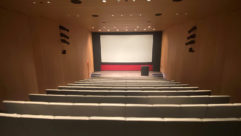AV Hyperbole
We in pro AV like to think we are less susceptible to advertising hyperbole, especially when it comes to claims of audio or video performance.
We in pro AV like to think we are less susceptible to advertising hyperbole, especially when it comes to claims of audio or video performance. We know better. We know how to interpret specifications and discern between what looks or sounds best for our customer’s specific product application. The problem is, our customer doesn’t.
Why should it matter? Because AV hyperbole that’s disseminated by manufacturers making broad, unfounded, and meaningless (although impressive) claims about their products’ performance reaches our end customer, whether we like it or not. To a nontechnical end user, there’s not much difference between the gear we install and the gear they see in the big box stores or advertised in magazines.
The result is that our customers expect pro AV systems to perform up to the hype created by the consumer electronics marketers — and that’s virtually impossible.
A good example is one well-known video electronics manufacturer’s claim of “guaranteed resolution that rivals reality.” First of all, what is the resolution of reality? How many pixels does reality have? Secondly, how did they measure it so that they could support their guarantee?
Another example, very much in public consciousness today, is anything that begins with HD. My favorite is HD radio, which, we assume, stands for high-definition radio. In reality, there is no definition for high-definition radio, but since the marketing luster of the word “digital” is wearing off, I suppose they had to find some term to promote digital radio.
Of course, trying to explain these things to a nontechnical end user forces you either to go along with the hype and lie through your teeth to support the claims, or to put a large dent in the manufacturer’s technical credibility — neither of which is good for your business in the long run.
It puts us in an awkward position when those suppliers and equipment manufacturers that straddle the consumer and commercial/professional markets set the technical-performance bar. The pro AV business model depends on long-term relationships with customers that depend on you for solutions. In consumer audio and video products, it’s more often a one-time sale of products that quickly become commodity items and, essentially, disposable. (When’s the last time you had a TV repaired?)
Customers notice when the same brand-name logo appears on products seen in the home and in the boardroom (or classroom, or church, etc.). The high expectation of home-gear performance that commissioned retail salespeople promise is put on the gear you design into commercial systems or live events. The difference is the home system is probably only used occasionally and for entertainment, while the system you design and sell may be used daily, if not 24/7. Livelihoods — and sometimes even lives — may depend on its performance.
This is why consumer gear has no place in pro AV, and advertising hyperbole must be identified and exposed.
Mark Mayfield
Editor










